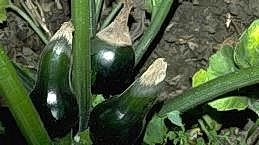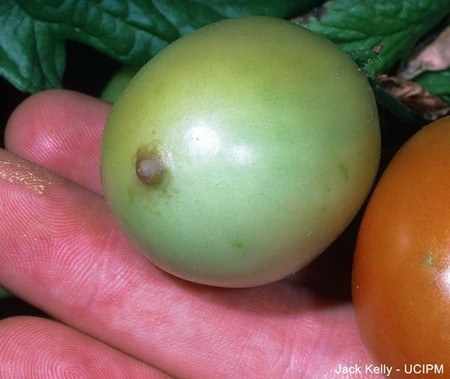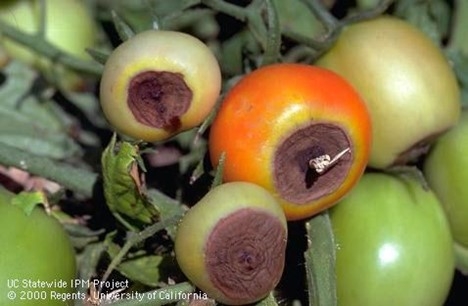Posts Tagged: plant
Fire vs. Plants: Some Plants Win!
“The fundamental chemistry of combustion lies at the core of the living world. When it happens within a cell it's called respiration. When it happens outside organisms, it's called fire.” (Stephen Pyne, NOVA) Plants cannot move when...
Does Extreme Heat Mean Taking Extreme Measures in Your Garden?
How is your garden holding up during our all-too-frequent summer heat waves? Chances are you're seeing scorched leaves, deformed flowers, severe die-back, blistered branches, constant wilting, and even plant loss. Plants are unable to tell us immediately...
Lawn-pocalypse! Surviving Drought
Ah, summer! The season of sunburns, pool parties, and… lawn droughts. If your once lush, green carpet now looks like a crunchy brown doormat, you're not alone. Let's dive into why your yard is staging a dramatic death scene and what you can do to...

Bermuda grass and weeds overtaking drought stressed turf grass.
Diagnosing herbicide problems takes detective work
Field day offers examples, tips for solving the mystery
A grower applies an herbicide to his tomato plants, or thinks a neighbor's treatment is drifting over her almond trees. A short time later, the leaves start to bleach or shrivel. Was it the herbicide? Or maybe water stress? Soil nutrients? Perhaps an insect?
Figuring out the causes of crop problems takes detective work, and like solving any mystery, it starts with knowing the signs, gathering evidence and asking questions.
The Diagnosing Herbicide Symptoms field day at UC Davis was an opportunity to see, up close, the shriveled cotton, scorched corn and dying sunflowers that can result when herbicides are applied incorrectly. Using the right herbicide – in the right proportion, at the right time and in the right field – can make the difference between a thriving crop and a financial loss.
A top take-away to avoid problems: “Don't do stuff at night!” laughed Becky Wheeler-Dykes, a UC Cooperative Extension farm advisor attending the June 26 event to better serve growers in Glenn, Tehama and Colusa counties. “The packages look the same. People grab the wrong jug.” And then, disaster.
Instructors were Brad Hanson, professor of Cooperative Extension; and Kassim Al-Khatib, the Melvin D. Androus endowed professor for weed science; both in the Department of Plant Sciences. They were joined by John Roncoroni, a Cooperative Extension emeritus farm advisor rooted in the department's weed science program. Attendees were a mixture of people from agriculture, industry, government officials, university researchers and Cooperative Extension advisors. The event was hosted by the Weed Research and Information Center, based in the Department of Plant Sciences.
Out in a field west of campus, visitors could see the progression of damage, from control plots with green and healthy crops to plants that looked sadder as herbicide concentrations increased. Visitors could see the patterns of damage for common foliar chemicals such as glyphosate, paraquat, and 2,4-D, as well as soil-applied herbicides from several chemical classes.
“There's a lot of detective work,” said Stephen Chang, a master's student in Hanson's lab aiming for a career in Cooperative Extension. “For example, the company that makes the herbicide says there shouldn't be a problem, but the grower says, there is a problem. This course helps with developing the skills to figure out what happened.”
It might not be the herbicide at all
Detective work and problem-solving frame the approach, Hanson explained. The cause of crop damage can be simple or complex. Like a good mystery, what appears to be a clue can turn out to be a red herring. Professionals need to draw on their inner Sherlock Holmes to observe and document symptoms, look for patterns in the plants and in the field, ask questions, gather information about the larger environment and collect samples.
An herbicidal Agatha Christie would then suggest: What if it's not herbicide damage at all? Participants learned to consider the possibility of insects, pathogens and viruses, as well as problems with water, nutrients, soil condition and even root damage from cultivation practices.
Hanson recalled puzzling over symptoms he found in an orchard. The culprit? “A leaking natural gas line,” he said.
More resources for herbicide issues
Participants also heard from Molly Mathews, deputy agriculture commissioner from Yolo County, on how a field investigation is conducted. Lawyer Robert Davies, of Donahue Davies LLP in Folsom, outlined the basics of what happens when there are lawsuits related to crop damage from herbicide drift.
The Diagnosing Herbicide Symptoms field day is part of a larger program of education and outreach offered through the Weed RIC, said director Julia Stover-Blackburn. It was the first time the event has been offered since the COVID-19 pandemic, she added.
- For more information about field days and resources, visit the Weed RIC webpage.
- For a thorough discussion of herbicide symptoms, visit this page overseen by Al-Khatib and sponsored by University of California Agriculture and Natural Resources.
- This online course follows an earlier version of the Diagnosing Herbicide Symptoms field program.
This story was originally published on the UC Davis Department of Plant Sciences website.
Blossom End Rot
This post is a rerun from 2023.
Have you noticed tomatoes that have round, water-soaked spots on the bottom? Blossom end rot (BER) is a frustrating problem that can be quite common in vegetable gardens, as it can affect tomatoes, peppers, and squash. You might notice it after a few very hot days. It usually starts on green fruit as a small, discolored spot on the end opposite the stem that might look water soaked. The spot enlarges and tissues dry out, becoming sunken, collapsed, and leathery.
Some tomato varieties, especially paste tomatoes, are affected more than others, but all varieties except cherry tomatoes seem to be susceptible if conditions are conducive. It is more likely to occur earlier in the season when plants are rapidly growing, but it can also show up later in the season when we have hot, dry weather.
Blossom end rot results from a low level of calcium in the fruit and a lack of water balance in the plant. Most of our soils have plenty of available calcium so there is no need to add more. Fluctuations in irrigation and/or heavy application of nitrogen are often the culprits in this condition. To reduce blossom end rot, monitor soil moisture to make sure the root zone neither dries out nor remains saturated. Follow recommended rates for vegetable fertilizers, using organic fertilizers.
Improvement in irrigation practices usually results in the problem going away. Rather than watering on a schedule, you should check the soil to determine its moisture level. Either by digging down into the soil without disturbing the roots or using a moisture meter, check to make sure the entire root zone is moist but not soggy. Use mulch around the plants to help maintain soil moisture, but make sure the mulch isn't right against the base of the plants.
Blossom end rot is not caused by a pathogen, so there are no pesticide solutions.
To reduce blossom-end rot:
• Use cover crops in the off season to increase water-holding organic matter in the soil.
• Irrigate before periods of hot weather.
• Don't disturb the root area.
• Don't over fertilize. Too much nitrogen during the early fruiting period can tie up calcium and make BER worse. Manure, especially poultry manure, can make it worse.
Vegetables affected by blossom end rot are still edible if they haven't begun to get moldy. Just cut away the discolored area.
More information about blossom end rot:
http://ipm.ucanr.edu/PMG/GARDEN/VEGES/ENVIRON/blossomendrot.html
Information about growing tomatoes in the home garden: https://anrcatalog.ucanr.edu/pdf/8159.pdf
Help Desk of the UC Master Gardeners of Contra Costa County (SEH)

blossom end rot2

blossom end rot3-450





